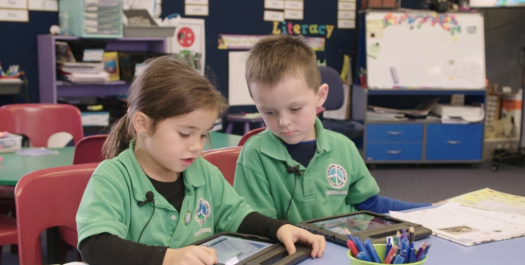Support social interaction
Social interaction can be difficult with ADHD. These ideas can support ākonga to interact with their peers more effectively
On this page:
On this page:
Current page section: Support social interaction
Go to top of current page: Support social interaction
Go to top of current page: Support social interaction
Go to top of current page: Support social interaction
Defeat stigma
Defeat stigma
The best way to defeat stigma is for people to be open with each other.
An animated research interview of young people with ADHD from ADHDVoices project.
No captions or transcript
Focus on strengths
Focus on strengths
Use activities that a learner with ADHD is good at as the basis for a group activity, allowing them to lead or contribute to the activity from a place of strength.
![6034 [IMG-secondary-students-doing-experiment.jpg]](https://inclusive-live-storagestack-assetstorages3bucket-3uty0hejzw6u.s3.ap-southeast-2.amazonaws.com/public/inclusive-education/example-images/IMG-secondary-students-doing-experiment__ScaleMaxWidthWzEwODZd.jpg)
Source: Ministry of Education | Te Tāhuhu o te Mātauranga
Use buddy system supports
Use buddy system supports
Buddy systems such as Tuakana-Teina help learners to learn to communicate with others and build a sense of belonging thorugh older learners modeling behaviours and support.
Practice skills in sport and PE
Practice skills in sport and PE
Support social interactions using regular class physical activities and structured games, such as stretch or dance breaks or five-minute playground activities.
![5995 [IMG-students-on-bars-in-playground-wide-shot.jpg]](https://inclusive-live-storagestack-assetstorages3bucket-3uty0hejzw6u.s3.ap-southeast-2.amazonaws.com/public/inclusive-education/example-images/IMG-students-on-bars-in-playground-wide-shot__ScaleMaxWidthWzEwODZd.jpg)
Source: Ministry of Education | Te Tāhuhu o te Mātauranga
Provide quiet spaces
Provide quiet spaces
Provide dedicated quiet spaces that ākonga can use when needed, to reduce stimulation.
Nourish friendships through learning
Nourish friendships through learning
Pair the learner with ADHD with a consistent, supportive peer in low-pressure, shared-interest activities.
Activities may include:
- Building something together (e.g., LEGO, puzzles)
- Playing a turn-taking game
- Co-leading a simple task (e.g., handing out materials)
Next steps
More suggestions for implementing the strategy “Support self-regulation and positive behaviour ”:
-
Current page Support social interaction
Return to the guide “ADHD and learning”
![11435 [ADHD-and-learning.jpg]](https://inclusive-live-storagestack-assetstorages3bucket-3uty0hejzw6u.s3.ap-southeast-2.amazonaws.com/public/inclusive-education/guides/featured-images/ADHD-and-learning__FillWzEwNCwxMDRd.jpg)
How to use this site
Guide to Index of the guide: ADHD and learning
Understand:
Strategies for action:
-
Identify needs and how to provide supportShow suggestions for Identify needs and how to provide support
-
Support self-regulation and positive behaviourShow suggestions for Support self-regulation and positive behaviour
- Support focus
- Support thinking
- Support social interaction
- Support positive behaviour
-
Helpful classroom strategies years 1-8Show suggestions for Helpful classroom strategies years 1-8
-
Helpful classroom strategies years 9-13Show suggestions for Helpful classroom strategies years 9-13

![5182 [bottle-bivy-poster-frame.png]](https://inclusive-live-storagestack-assetstorages3bucket-3uty0hejzw6u.s3.ap-southeast-2.amazonaws.com/public/inclusive-education/example-images/bottle-bivy-poster-frame__ScaleMaxWidthWzEwODZd.png)
